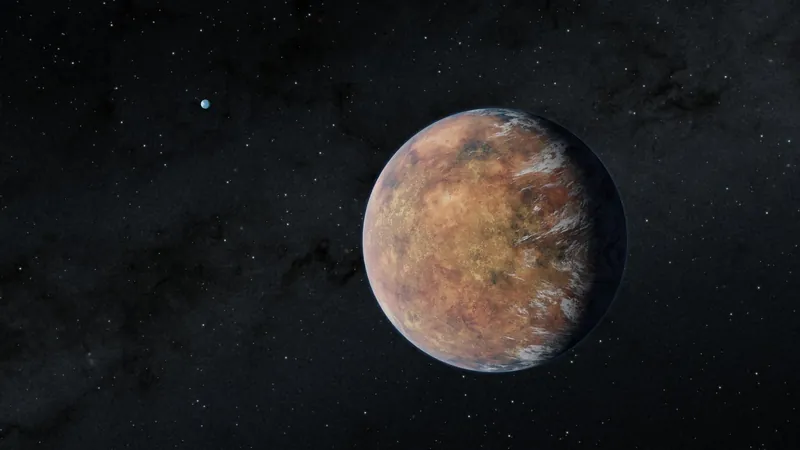
NASA Unveils Game-Changing Insights on Exoplanet Exploration
2025-07-31
Author: Ming
NASA's Bold New Blueprint for Exoplanet Science
Driven by humanity's insatiable curiosity, science thrives on structured approaches that unify researchers even amidst differing views. Enter the Decadal Surveys—a guiding framework crafted by the National Academies that sets the pace for advancements in specialized fields like astronomy and space science.
Recently, the spotlight turned to the Exoplanet Exploration Program (ExEP) as its lead scientists unveiled a crucial report, outlining 17 ambitious scientific goals for the next 3-5 years. This tactical plan, known as Rev H, is paving the way for groundbreaking discoveries in our quest to understand other worlds.
The Mission Behind the HWO: Unlocking Habitable Worlds
Central to these aspirations is the Habitable Worlds Observatory (HWO), a powerhouse mission merging concepts from LUVOIR and HabEx, both large-scale spacecraft designed to probe the cosmos. A standout recommendation from the 2020 Decadal Survey, HWO aims to characterize 25 potentially habitable exoplanets during its operational life.
However, achieving this lofty goal requires a solid grasp of what exoplanets truly are. The report highlights essential knowledge gaps, such as estimating the frequency of temperate rocky planets and understanding the capabilities of different telescope systems to detect various types of exoplanets.
Bridging Knowledge Gaps Essential for Success
To set HWO up for success before its first observation, understanding exoplanet atmospheres is non-negotiable. The report outlines several knowledge gaps related to atmospheric research—such as conducting spectroscopic observations of small exoplanets and modeling these complex atmospheres.
Equipped with this foundational knowledge, scientists will be better prepared to interpret data and uncover vital formation patterns of these celestial bodies and their host stars.
Navigating Funding Challenges and Strategic Collaborations
The report also identifies current strategies aimed at closing these gaps, encouraging collaboration through initiatives like the Exoplanet Opacity Database. As the scientific community rallies around these opportunities, the call to action rings loud for anyone eager to contribute to the quest for habitable worlds.
Yet, it's worth noting that the pursuit of knowledge isn't without challenges. A 47% funding cut to the Science Mission Directorate poses a significant threat to missions like the HWO. As personnel shifts occur, those passionate about finding our next potential habitable worlds remain vigilant, ready to leverage this report as a roadmap toward their ultimate discovery.
The Journey Ahead: Unity in Discovery
As NASA embarks on this ambitious path, the collaboration and collective energy of the scientific community could very well be the key to unlocking the next chapter in exoplanet exploration. The ambition to identify a habitable world has never been more tangible, and with a solid game plan in place, the cosmos are truly within reach.

 Brasil (PT)
Brasil (PT)
 Canada (EN)
Canada (EN)
 Chile (ES)
Chile (ES)
 Česko (CS)
Česko (CS)
 대한민국 (KO)
대한민국 (KO)
 España (ES)
España (ES)
 France (FR)
France (FR)
 Hong Kong (EN)
Hong Kong (EN)
 Italia (IT)
Italia (IT)
 日本 (JA)
日本 (JA)
 Magyarország (HU)
Magyarország (HU)
 Norge (NO)
Norge (NO)
 Polska (PL)
Polska (PL)
 Schweiz (DE)
Schweiz (DE)
 Singapore (EN)
Singapore (EN)
 Sverige (SV)
Sverige (SV)
 Suomi (FI)
Suomi (FI)
 Türkiye (TR)
Türkiye (TR)
 الإمارات العربية المتحدة (AR)
الإمارات العربية المتحدة (AR)